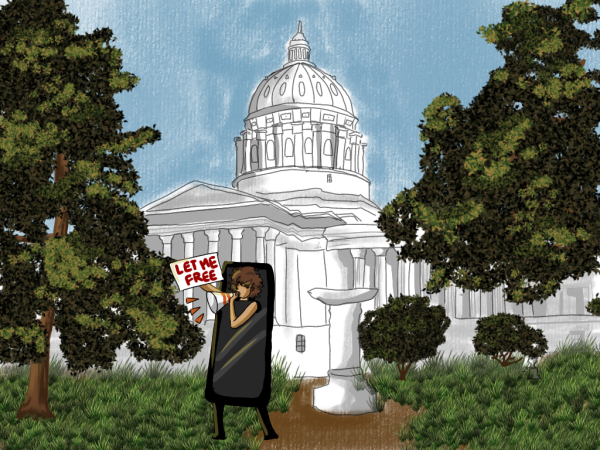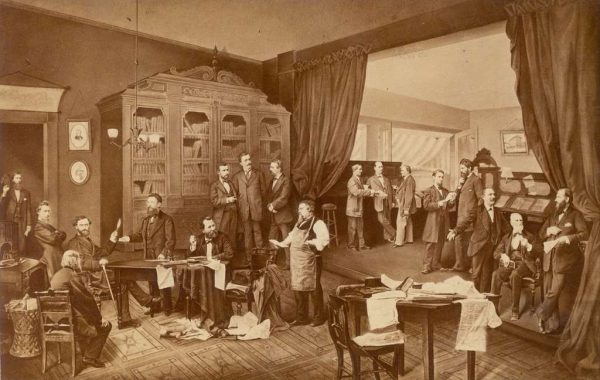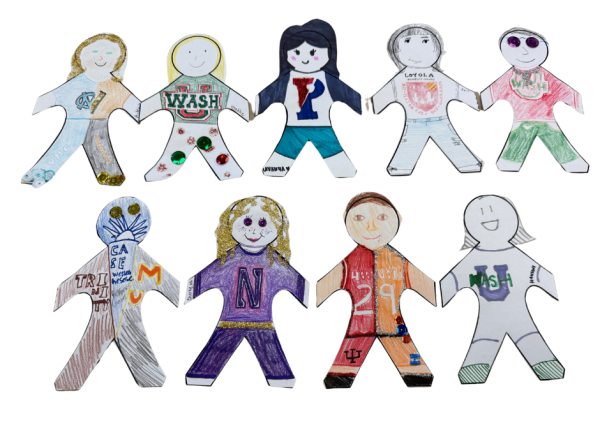Stereotype Threat: A Psychological Situation
While driving in downtown St. Louis, my dad and I were pulled over by law enforcement. We were dropping off mail and waited at a stop light to make a left hand turn. We make the turn and then immediately notice flashing red and blue lights in the rear view mirrors. I wonder what we did because it was a standard and legal left hand turn.
We pulled over and I noticed my dad put his hands on the steering wheel as a precaution so the officer could see his hands at all times. At the time, my dad was wearing his Clayton High School basketball coach shirt.
Once the officer got to our window, he explained that we made an illegal left hand turn at the light. My dad tried to explain that he makes that turn the same way everyday and so does everyone else so he was also confused why the officer was telling him it was wrong. Of course, however, the officer continued to tell him that he was wrong and the turn was illegal.
Before he could give us a ticket, the officer looks at my dad’s Clayton shirt and asks if he works there. My dad said yes and then the officer proceeded to tell us that he will let this slide as a warning then. At that moment, I saw my dad’s chest rest as the relief left him. We will never know if his shirt was the thing which saved him from a ticket, but it is easy to assume that it was.
Stereotype threat, according to The Glossary of Education Reform, is the risk of confirming negative stereotypes about an individual’s racial, ethnic, gender, or cultural group. The term was coined in 1995 by Joshua Aronson and Claude Steele.
They conducted a verbal study consisting of white and black participants. The study focuses on a socio-psychological predicament that can arise from widely-known negative stereotypes about one’s group. Looking at a specific part of the study more closely, they introduced a verbal test as a diagnostic test. Resulting in the black participants performing worse than the white participants. Then, once they took away the introduction of the test as a diagnostic test the correlation disappeared.
This is stereotype threat.
The black participants inevitably performed worse because they have been stereotyped to not do well on tests at any capacity. Steele and Aronson’s finding concluded this theory.
Continuing to look at another part of their study where they found that girls ranging in age from seven to eight were experiencing stereotype threat. This is due to the harsh reality of being a young black girl in a society which does not accept them causing them to start looking over their shoulder at such a young age. Experiencing stereotype threat can cause people to separate themselves from society as a way to shield themselves from the potential life threatening situation.
The Cambridge English Dictionary defines stigmatize as treating someone unfairly by disapproving of him, her, or it. The stigma around being a black kid in a predominantly white neighborhood is what made Makhi Carouthers, a junior student attending Clayton High School, feel not welcomed at a friend’s house after homecoming night. Carouthers said, “His parents rushed him into the house and asked him ‘Do you even know these people?’ and of course that obviously made me not want to be there anymore.”
Being referred to as ‘these people’ is specific to black people. The phrase does not affect anyone else the same way as it does black people. Although the intentions behind this phrase are not always the same, it is the racist undertone that seems to always follow the phrase which often rubs someone on the receiving end the wrong way.
Carouthers continued to talk about how he felt the reason why his friend’s parents reacted the way they did was not only his skin color but also because of the way he dressed and talked. The stereotype that black guys who dress and talk “ghetto” are almost always associated with being a threat. Despite it not being said aloud, this was the stereotype which prevented a friendship between two boys who did not share the same skin color.
After an interview with Herman Whittaker, school resource officer for Clayton High School, he explained what it is like regarding stereotype threat from both sides: law enforcement and being a black man. As for being a part of the law enforcement and how it is connected to stereotype threat, he explained that there is a training called implicit bias. A training where you go through courses which allow you to put yourself in someone else’s shoes, to not look at individuals the same way the media displays them to be.
As for being on the side of being a black man experiencing stereotype threat Whittaker said, “Growing up it was taught that you act a certain way when you go into stores so people won’t see you as a threat or think you’re up to something.” Unfortunately, this lesson was taught to many kids of a different skin color. The sad part about it is that the kids are being taught to follow these instructions to fit in with what society judges as right or wrong.
Dealing with stereotype threat is a complicated thing because it varies in its effects amongst several ethnic and racial groups. A person who does not know about a problem does not have to worry about it. Teaching others about the problem helps eliminate the ignorance that holds over the people who cause the problem in the first place.
A $50 or more donation includes a subscription to the Clayton High School Globe 2024-2025 print news magazine.
We will mail a copy of our issues to the recipients of your choice.
Your donation helps preserve the tangible experience of print journalism, ensuring that student voices reach our community and that student democracy thrives.

Zoe Daniels-Sankey is the Opinion Section editor of the Globe and a senior this year. She is in her third year with the publication and is very excited to continue writing stories...







